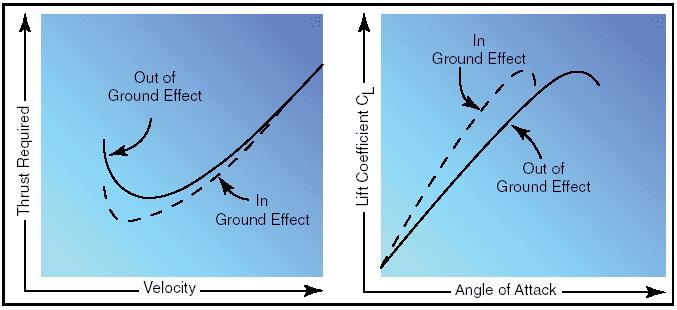forty-two wrote:richard_leeds wrote:The other interesting feature is that this is variable with speed. Assuming the best effect is with the wing as low as possible, then you'd want it to droop at with relatively low speed. Then stop dropping so it doesn't hit the ground at higher speed.
It's a little bit paradoxical really. It's as if the wing is behaving exactly the opposite way to how it should!
As has been said by other posters though, perhaps this is a loss RB are happy to take as it makes them much faster through the mid-high speed corners.
Yes, it may is on first thought, but there could be a little bit more to it:
Let´s assume for the moment that the RBR and Ferrari front wings bend downward at the ends, making the endplates and outer wing sections run closer to the ground.
Why would they do it, when this will mainly happen at high speeds (therefore on the straights as well)?
Running the wing closer to the ground will make them more efficient. Means it will produce more downforce for the same amount of drag (better L/D ratio). This will help in the medium and fast speed corners, so it´s an advantage.
It may produces more downforce on the straights as well, where the downforce is not really needed, but as it (normally) does not increase the drag, it does not hurt either. So there is maybe not that big an disadvantage.
On the other hand, the extra downforce on the straight, could be used to "work" the front tires a bit more, creating perhaps a little bit more temperature, which is maybe not a bad thing, considering the 2010 tire situation.
If the wing becomes more efficient, closer to the ground (producing more DF), they are maybe able to run the wing at a slightly lower angle of attack, therefore getting the same downforce as before, but reducing the drag.
Surely a F1 front wing is much more complex as a single/simple aerofoil, but I would think that the underlying concepts are still true. Here are some examples out of the aviation world, to illustrate the effect. Notice the shape of the wingtips.
This plane is designed to fly in close proximity to the gound/water making use of the groundeffect. (for the aeroplane, this means creating more lift for a given amount of drag)

Lift/Drag relationship for a wing

The FIA keeps there options open, to clamp down on any too creative interpretation of the rules.
3.17.8 In order to ensure that the requirements of Article 3.15 are respected, the FIA reserves the right to
introduce further load/deflection tests on any part of the bodywork which appears to be (or is suspected of), moving whilst the car is in motion.
So either they let people go down this route now, which means everybody has to try and copy the concept and spending extra money and maybe risking some wing failures in places like Monza.
Or they come up with a stricter load test after Hungary, to keeps things in check.
They have both options.
As much as I respect and admire the creativity of the guys at RBR and Ferrari, IMHO the later option is the more sensible one, from a cost and safety perspective.
The RBR and Ferrari guys have had there advantage, fair enough, but now, they should stop the thing, before it get´s out of hand.
At the end everybody will copy it, like the F-Duct,DDD and EBD, it will just cost extra money and nobody will gain a huge advantage. Some will be able to copy it faster then others, but at the end of the day, everybody will find a way to do it.










